9 Actionable B2B Webinar Marketing Techniques
B2B webinar marketing techniques have been widely adopted and boast one of the highest conversion rates of any marketing technique - between 20% and 40% in one recent study - and are characterized by their versatility. You can use them to drive sales, build trust and even generate new leads in conjunction with joint-ventures, referrals and paid advertising.
If you work for any kind of company with an online presence, you're no stranger to the GoToWebinar home screen.
Yet many marketers are failing to properly optimize their b2b webinar marketing plan. The result is that both revenue and potential long-term relationships are being left on the table.
But it needn't be the case. The truth is that effective B2B webinar marketing is within anybody's grasp as long as they have the right tools and advice, which is exactly what we're going to give you in this blog post.
A Quick Note for Beginners
The advice in this post is structured in such a way as to allow anybody new to webinar marketing to gain a full understanding of the topic. Those with more experience will find a wealth of actionable advice to improve their results.
1. Outline Your Goals
There’s a reason that big online companies like KissMetrics, UnBounce and HubSpot (to name just a few) are piling time and resources into creating incredible webinars. They've realized that it's possible to use them to effectively meet a wide range of marketing goals in ways that other methods simply can't.
The Content Marketing Institute has found that 60% of companies are using webinars, for instance.
The first step is to define your ideal outcomes. Generally speaking, they will correspond to one of the following:
- Generate new leads - Do you want to promote to a new audience? Webinars can act as powerful sign-up incentives, bringing subscribers into the first stage of your sales funnel. Ian Brodie, pictured below, effectively uses this strategy as part of his joint venture strategy.
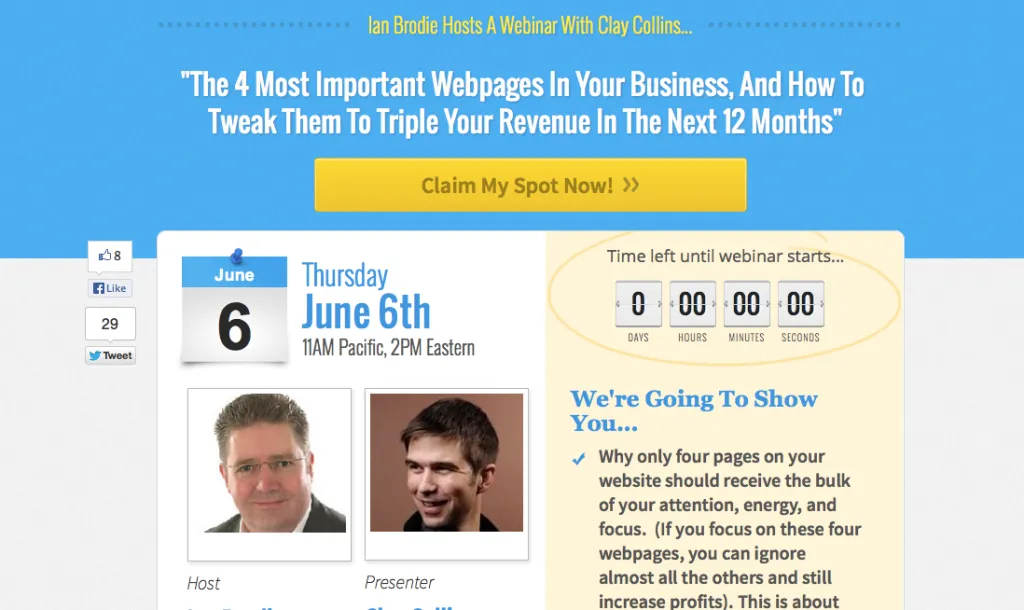
(Source)
- Convert leads into customers - Is the intention to drive sales by specifically addressing the needs of the those segments of your current audience (across whatever channels) that haven't yet converted?
- Build relationships with existing customers - Webinars are one of the most effective ways of building trust with your audience. As Robbie Kellman Baxter outlines in her book The Membership Economy, we are moving towards a subscription-based marketplace. This makes maintaining relationships with existing customers all the more important.
- Sell new or third-party services to existing customers - You can use webinars to resell to your current client base. Premium solutions, second-tier memberships, third party affiliate offers (if appropriate) – all can be effectively promoted.
- Provide Technical Assistance - The purpose here is to provide specific product instructions. The real value is in allowing the instruction to be guided by Q&A rather than a script. Buzzsomo, for instance, regularly holds these kinds of coaching calls.
Once you've decided what it is you want to achieve, it's onto step two...
2. Define Your Audience
In order to put together tightly-focused and relevant information for your attendees, you need to properly understand, as marketing wizard William Bill puts it, "who and where they are".
Your strategy for defining your audience will vary depending on your predetermined goals. For instance, discovering what your existing user-base want from an instructional webinar will likely be a simple case of conducting a short survey. Putting together a profile of a completely new segment of your market, on the other hand, will require a more involved approach.
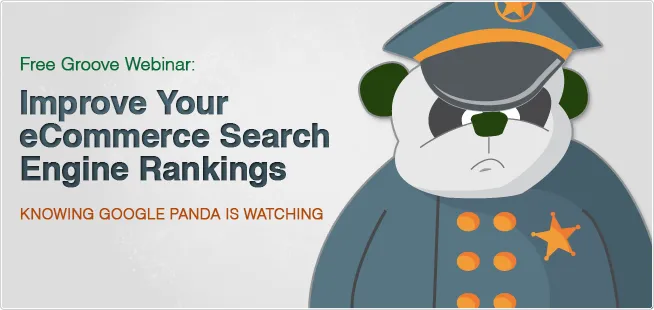
(Source)
Both private and publicly-available data should factor into your analysis. As mentioned, client surveys can also be a useful tool for uncovering interests. In either case you're looking for pressing, timely and focused audience needs. Take the example from Got Groove above. The chosen topic is time-sensitive (it's about Google Panda), it's pressing because many sites will likely have suffered a loss of rankings in light of the then-recent update, and finally, it's focused – improving eCommerce search rankings which have tanked because of the Panda update is a very specific topic.
3. Create A Strong Value Proposition
Your webinar's value proposition is made up of all the benefits that it will deliver to a potential attendee. Alongside the core problem that you're seeking to solve, you can offer a range of additional features. Doing so will work to maximise opt-in rates.
Consider including some of the following:
- Trending topics - B2B clients in particular have a need to keep up with industry trends and changes. Webinars are one of the best formats for providing this kind of analysis because of their depth and the opportunities for audience-speaker participation.
- Guest speakers - Marketers and business executives have a unique problem in regards to online content. They have to keep their finger on the pulse of their industry but tend to be very time-poor. Having the option to listen to guest speakers through the services they already subscribed to helps overcome this problem. Kissmetrics (pictured below) regularly offer webinars with selected partners.
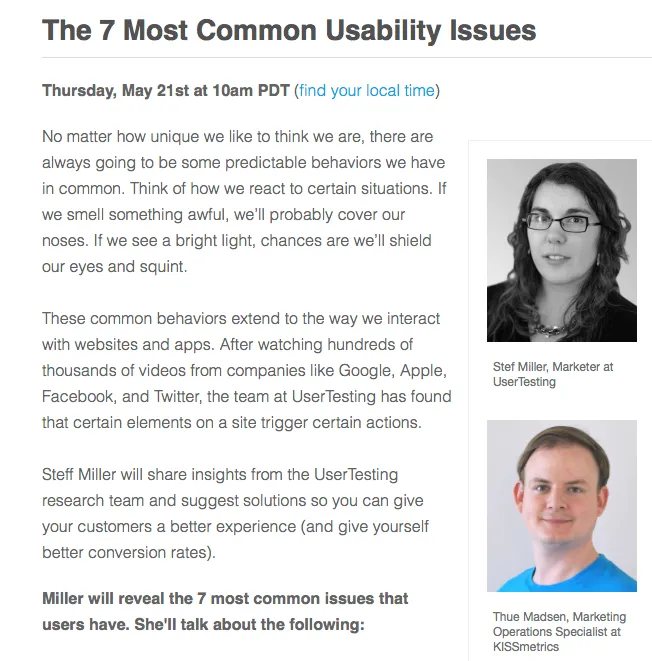
(Source)
- Giveaways - More and more companies are offering free giveaways to encourage both new leads and current subscribers to attend their webinars. They're liked by marketers because they allow them to promote a product directly without coming across as running a sales pitch.
4. Craft Engaging Content
This is linked to point number three but is concerned primarily with the elements that need to come together once you've got your attendees on board. It's important that you provide an engaging, fluid experience if you want to maximise conversions.
Consider including:
- Stories and company anecdotes (people love to see what's going on behind the scenes).
- Unusual or unique industry trends (as mentioned above).
- Case studies (data-based or anecdotal).
- Engaging images (not stock).
Also keep the following points in mind to build interest:
- Keep the length between 30 and 60 minutes.
- Brand your slides to keep your company in the back of attendees' minds.
- Leave time for a question and answer session.
Cohen Veterans organized an interesting series of Webinars in which they incorporated many of these elements. They included data-driven case studies, appealing visuals, and novel industry ideas. It was also delivered by a highly-qualified partner, not the company itself.

(Source)
5. Create a Killer Landing Page
Whilst typical conversion-boosting principles apply, there are several data-backed insights we can bring to bear on the way we craft webinar opt-in pages.
The following is actionable advice that you can use to craft your next promotional page:
- Split test different webinar pages - Unbounce, Leadpages and Wishpond all offer this functionality. Slight changes can often lead to significant increases in sign-ups.
- Include a picture of the speaker's (or somebody's) face - Including a picture of a face on a landing page has been shown to increase conversions by up to 102%. The example from Wishpond below is a great one.
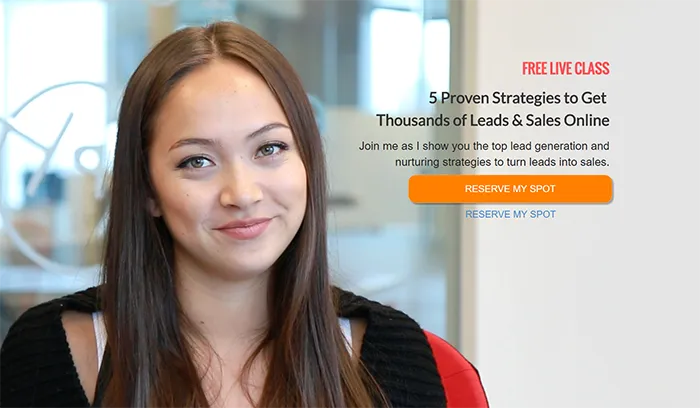
(Source)
- Don't skimp on the detail - Including lots of information about the upcoming webinar, as opposed to a short paragraph of text, resulted in a 12.8% increase in sign-ups for KissMetrics.
- Keep design simple - Fancy designs have been shown to have little, if any, impact.
- Emphasise the fact that it is not a product pitch - Marketers are especially used to sitting through webinars only to find that it's been a preamble to a product pitch. They're understandably frustrated when this happens! Make sure that you're clear about the actual value that's on offer.
6. Choose the Right Software
This is a short one! Stick with GoToWebinar. People seem to like it. Neil Patel reported an increase of 21% in attendance whenever he used it. Digital Marketer has also seen similar results.
7. Include Webinars at Every Stage of the Buyer Journey
I've referred to the versatility of webinars numerous times in this post, but it's a point worth mentioning again. You can use them to build trust, engagement and willingness to buy at every stage of your customer journey.
Take a look at the picture below. It represents a typical customer cycle for SaaS companies.
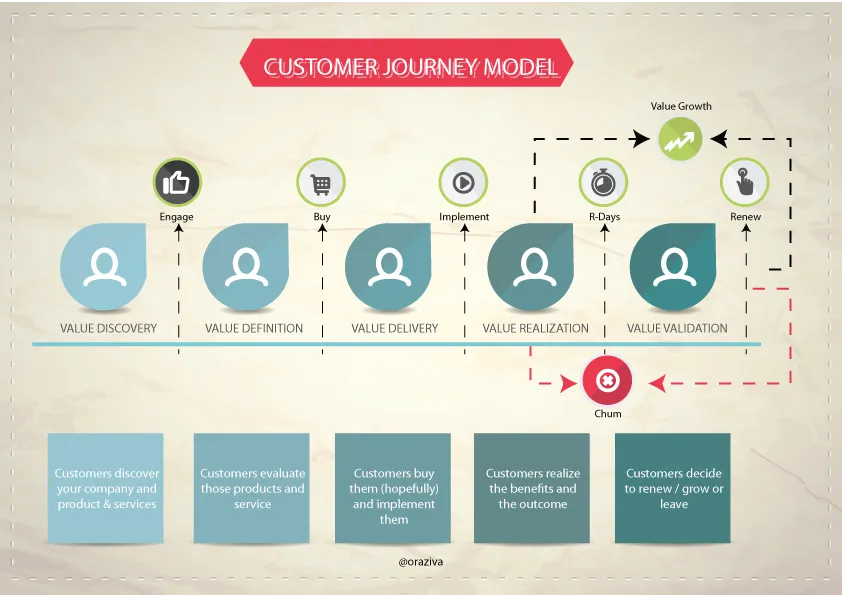
You can incorporate different types of webinars at each of these points as a way of tightening your sales funnel. Some examples might be as follows:
- Discovery - As mentioned above, webinars act as a great sign-up incentive and are one of the best ways of capturing new leads at the "value discovery" stage. These will typically be promotional webinars that are designed to address new audiences, offering useful information alongside promoting a free trial or product.
- Trial/Subscription - Technical webinars that allow users to really understand your service and interact directly with customer support staff can facilitate the transition from "value definition" to "value delivery".
- Purchase stage and continued trust building - Webinars that add value outside of your core offering by exploring indirectly related topics will position you as an industry thought-leader in the minds of your customers. The fact that you're willing to give value over and above what's expected will help build trust and reduce churn in the long-term. These will account for the "value realization" and "value validation" stages.
All of these various elements are, of course, interconnected. So, for instance, a webinar about recent CRM trends aimed at your current subscribers may lead to new leads or a technical webinar may help to build trust with paying customers. The key is in variety and proper positioning.
8. Pick a Diverse Promotion Mix
Once you've defined your audience, picked a great topic, designed an engaging and informative slideshow and script, built a conversion-focused landing page and integrated it into the right phase of the customer journey (quite a list I know!), then it's time to promote.
Here are some potential options:
- Promote to your email list - This may seem an obvious one but it needs saying. Around three emails – one to promote the post, one an hour before the event and one when it starts – is a good, research-backed, number.
- Joint ventures – These are single-handedly one of the most powerful b2b webinar marketing techniques available to companies that operate online, especially SaaS providers. They have huge benefits from both the perspective of the webinar marketer and the influencer that's willing to promote it to their audience. They work best when you can incorporate some kind of affiliate commission into your referral model - SaaS companies make for hugely attractive partners because they can often offer recurring affiliate revenue. Noah Kagan, of Sumo Me, provides a good example (shown below).
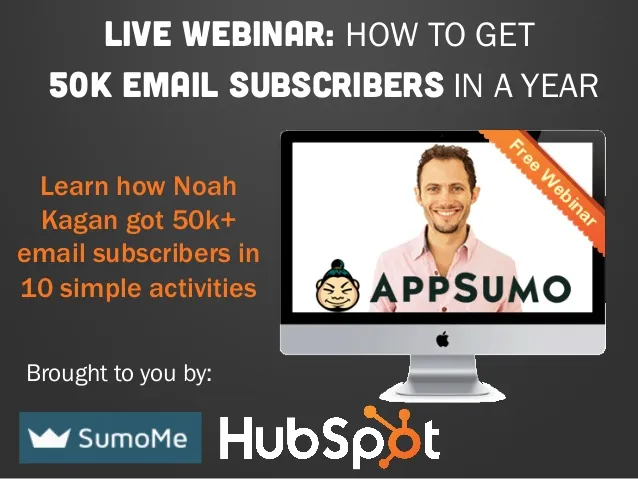
(Source)
- Social media advertising – This doesn't mean just posting on your various accounts. If you can demonstrate a good ROI with paid social media advertising in regards to the number of sales you generate through each webinar, then there's no excuse for not building such a process right into your core sales strategy.
- Create a separate email list for past attendees – As has been repeatedly mentioned throughout the article, webinars are as much about building trust as they are about generating new leads. By having a separate list you're able to leverage regular watchers by communicating with them directly.
- Create a recording – Account for people in separate time-zones and new visitors to your site by creating a page from which they can download the recording. Remember to get their email details! Old KissMetrics webinars account for 20% of overall leads.
9. Measure Your Results
Finally, you want to measure how well your webinar marketing strategy is working in the context of your outcomes. There's a handful of key metrics that you should be monitoring. Doing so will allow you to gauge the effectiveness of new approaches when you try them.
- Registration – This is a good comparative figure. It can help you determine which topics are "sticking" and which aren't when you compare individual counts to the average.
- Attendance – The purpose of your attendance rate (which UnBounce put at about 25% for the industry) is to monitor how well your promotion to registrants is.
- Attendee satisfaction – This is a simple case of including an exit poll (preferably for some kind of reward) at the end of the webinar. Most software has this functionality.
- Goals – With proper analytics you should be able to effectively tie each campaign with a specific goal.
Wrapping Up - B2B Webinar Marketing Techniques
Though there are lots of things to get right, the basic process behind developing an effective webinar marketing campaign is relatively simple. When you couple a willingness to test and experiment with a strong analytics framework, you'll be well on your way to boosting revenue and building trust.
Don't forget that webinars boast one of the highest conversion rates of any marketing technique. Big companies are including them in every stage of their sales funnel. It's probably a fair guess to say that you should be too.